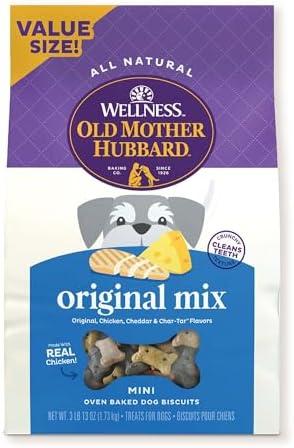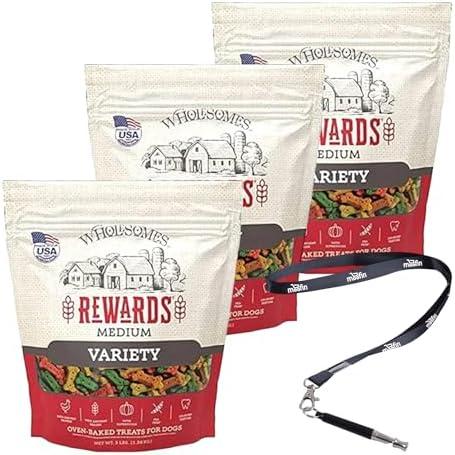Once upon a time in a cozy home, a golden retriever named Max was always eager for treats. His owner, Sarah, wanted to keep him healthy while satisfying his cravings. One day, she discovered the wonders of carrots. Crunchy, sweet, and packed with vitamins, carrots became Max’s favorite snack. Not only did they promote dental health, but they also provided a low-calorie option for his playful spirit. Sarah felt great knowing she was giving Max the best. So, if you want to treat your furry friend right, consider carrots—the perfect vegetable for dogs!
Contents
- Understanding the Nutritional Benefits of Vegetables for Dogs
- Top Vegetables That Promote Canine Health and Well-Being
- How to Safely Introduce Vegetables into Your Dogs Diet
- Expert Recommendations for Serving Sizes and Preparation Methods
- Q&A
Understanding the Nutritional Benefits of Vegetables for Dogs
Incorporating vegetables into your dog’s diet can significantly enhance their overall health and well-being. Vegetables are packed with essential vitamins, minerals, and antioxidants that can support various bodily functions. For instance, leafy greens like spinach and kale are rich in iron and calcium, which are vital for maintaining strong bones and a healthy immune system. Additionally, these greens can help improve your dog’s digestion due to their high fiber content.
Carrots are another excellent choice, offering a crunchy texture that many dogs love. They are low in calories and high in beta-carotene, which is converted into vitamin A in the body. This vitamin is crucial for maintaining good vision, skin health, and a robust immune response. Moreover, chewing on carrots can help promote dental health by reducing plaque buildup and keeping your dog’s teeth clean.
Sweet potatoes are a powerhouse of nutrition, providing complex carbohydrates that can give your dog sustained energy throughout the day. They are also rich in vitamins C and B6, potassium, and fiber, making them a fantastic addition to your dog’s meals. The natural sweetness of sweet potatoes can make them a favorite treat, while their nutritional profile supports healthy digestion and overall vitality.
green beans are a fantastic low-calorie snack that can help with weight management. They are high in fiber and low in fat, making them an ideal choice for dogs that need to shed a few pounds. Additionally, green beans are a good source of vitamins K and C, which play a role in bone health and immune function. By incorporating a variety of vegetables into your dog’s diet, you can ensure they receive a balanced and nutritious meal that supports their health and happiness.
Top Vegetables That Promote Canine Health and Well-Being
Incorporating vegetables into your dog’s diet can significantly enhance their overall health and well-being. Many vegetables are packed with essential vitamins, minerals, and antioxidants that can support various bodily functions. For instance, **carrots** are not only a crunchy treat that dogs love, but they also promote good vision and dental health. Rich in beta-carotene, carrots can help maintain healthy skin and coat while also providing a low-calorie snack option.
Another fantastic choice is **sweet potatoes**, which are loaded with fiber and vitamins A, C, and B6. These nutrient-dense tubers can aid in digestion and boost the immune system. Sweet potatoes are also known to help regulate blood sugar levels, making them an excellent option for dogs that may be prone to diabetes. Their natural sweetness makes them a favorite among furry friends, ensuring that your dog enjoys their healthy meal.
**Green beans** are a versatile vegetable that can be served fresh, steamed, or even frozen. They are low in calories and high in fiber, making them an ideal snack for dogs looking to maintain a healthy weight. Additionally, green beans are rich in vitamins C and K, which contribute to bone health and overall vitality. Including green beans in your dog’s diet can also help keep them feeling full and satisfied without the extra calories.
Lastly, consider adding **spinach** to your dog’s meals. This leafy green is a powerhouse of nutrients, containing iron, calcium, and antioxidants. Spinach can support healthy digestion and contribute to strong bones and teeth. However, it’s essential to serve spinach in moderation due to its oxalate content, which can interfere with calcium absorption. When prepared correctly, spinach can be a delightful and nutritious addition to your dog’s diet.
How to Safely Introduce Vegetables into Your Dogs Diet
Introducing vegetables into your dog’s diet can be a rewarding experience for both you and your furry friend. However, it’s essential to approach this transition with care to ensure your dog’s health and safety. Start by selecting vegetables that are safe and beneficial for dogs, such as carrots, green beans, and sweet potatoes. These options are not only nutritious but also appealing to most dogs. Always wash and prepare the vegetables properly, cutting them into small, manageable pieces to prevent choking hazards.
When incorporating new vegetables, it’s wise to introduce them gradually. Begin with a small amount mixed into your dog’s regular food, observing for any signs of digestive upset. **Monitor your dog’s reaction** closely; if they show any signs of discomfort, such as vomiting or diarrhea, discontinue the vegetable and consult your veterinarian. This cautious approach allows you to identify which vegetables your dog enjoys and tolerates well.
Cooking vegetables can enhance their digestibility and flavor, making them more appealing to your dog. Steaming or boiling vegetables like broccoli or zucchini can soften their texture while preserving essential nutrients. Avoid adding any seasonings, oils, or sauces, as these can be harmful to dogs. Instead, serve the veggies plain to ensure they receive the maximum health benefits without any unwanted additives.
Lastly, remember that moderation is key. Vegetables should complement your dog’s diet rather than replace their primary source of nutrition. Aim for vegetables to make up no more than **10% of your dog’s daily caloric intake**. This balance will help maintain their overall health while introducing them to a variety of flavors and textures. By following these guidelines, you can safely enrich your dog’s diet with wholesome vegetables, promoting a healthier and happier life.
Expert Recommendations for Serving Sizes and Preparation Methods
When it comes to incorporating vegetables into your dog’s diet, understanding the right serving sizes is crucial for their health and well-being. **Experts recommend starting with small portions** to gauge your dog’s reaction. For most medium-sized dogs, a serving size of about **1/4 to 1/2 cup** of cooked vegetables per meal is ideal. Smaller breeds can thrive on **1/8 to 1/4 cup**, while larger breeds may enjoy **1/2 to 1 cup**. Always adjust based on your dog’s size, activity level, and dietary needs.
Preparation methods play a significant role in maximizing the nutritional benefits of vegetables. **Steaming or boiling** vegetables is often the best approach, as it helps retain essential vitamins while making them easier for your dog to digest. Avoid adding any oils, seasonings, or salt, as these can be harmful to your pet. **Pureeing** certain vegetables can also enhance digestibility, particularly for those that are fibrous, allowing your dog to absorb more nutrients.
Some vegetables are particularly beneficial for dogs. **Carrots, green beans, and sweet potatoes** are excellent choices, packed with vitamins and minerals. When serving these vegetables, ensure they are cut into bite-sized pieces to prevent choking hazards. For instance, **carrots can be sliced into sticks** or rounds, while sweet potatoes should be cooked and mashed or cubed. Always introduce new vegetables gradually to monitor for any adverse reactions.
Lastly, it’s essential to remember that vegetables should complement your dog’s balanced diet rather than replace it. **Consult with your veterinarian** to determine the best vegetable options and serving sizes tailored to your dog’s specific health needs. By following these expert recommendations, you can enhance your dog’s diet with nutritious vegetables that promote overall health and vitality.
Q&A
-
What vegetables are safe for dogs to eat?
Many vegetables are safe and healthy for dogs, including:
- Carrots – Low in calories and high in fiber, they promote dental health.
- Green beans – A great source of vitamins and low in calories.
- Sweet potatoes – Rich in vitamins A and C, they are a nutritious treat.
- Peas – Packed with protein and vitamins, they are a tasty addition to your dog’s diet.
-
Are there any vegetables that dogs should avoid?
Yes, certain vegetables can be harmful to dogs. Avoid feeding them:
- Onions – Can damage red blood cells and lead to anemia.
- Garlic – Similar to onions, it can be toxic in large amounts.
- Mushrooms – Some varieties are toxic and can cause severe reactions.
- Avocado – Contains persin, which can be harmful to dogs in large quantities.
-
How should I prepare vegetables for my dog?
To ensure your dog’s safety and enjoyment, prepare vegetables by:
- Washing thoroughly – Remove any pesticides or dirt.
- Cooking lightly – Steaming or boiling can make them easier to digest.
- Cutting into small pieces – Prevent choking hazards and make them easier to eat.
-
Can vegetables replace dog food?
While vegetables can be a healthy supplement to your dog’s diet, they should not replace complete dog food. A balanced diet is essential for:
- Meeting nutritional needs – Dogs require specific nutrients that vegetables alone cannot provide.
- Maintaining energy levels – Proper dog food ensures your pet has the energy to stay active.
- Preventing health issues – A balanced diet helps avoid deficiencies and related health problems.
Incorporating the right vegetables into your dog’s diet can enhance their health and vitality. By choosing nutrient-rich options like carrots or green beans, you can provide your furry friend with essential vitamins while keeping mealtime exciting. Make the smart choice today!

大家好,我是彼得潘,專業的手法身體治療師。我喜歡探索和研究各種主題,並透過與人工智慧的合作分享專業、實用、有趣的文章。我們定期進行人工審核,以確保內容的準確性。如果您發現文章中有任何不準確的地方,請隨時與我們聯繫,我們會及時糾正。您可以透過 [email protected] 與我們聯繫。



